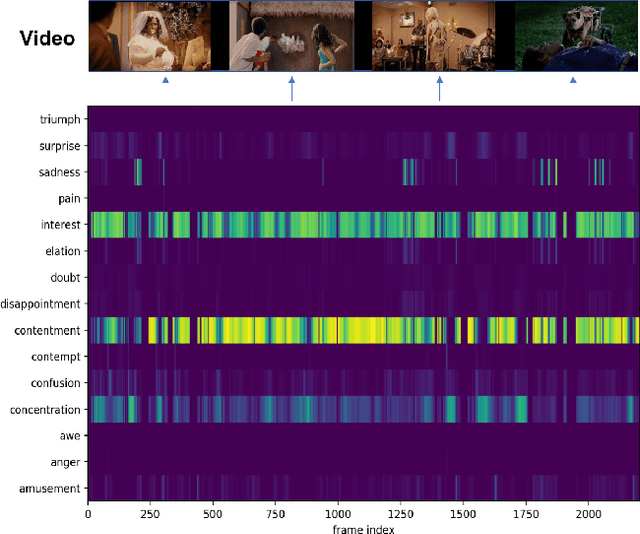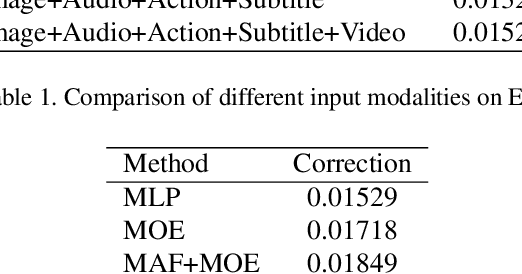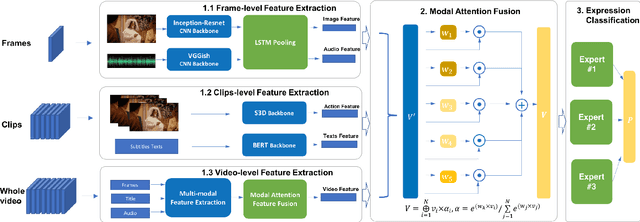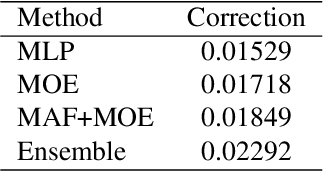Chao Ban
Trusted Unified Feature-Neighborhood Dynamics for Multi-View Classification
Sep 01, 2024Abstract:Multi-view classification (MVC) faces inherent challenges due to domain gaps and inconsistencies across different views, often resulting in uncertainties during the fusion process. While Evidential Deep Learning (EDL) has been effective in addressing view uncertainty, existing methods predominantly rely on the Dempster-Shafer combination rule, which is sensitive to conflicting evidence and often neglects the critical role of neighborhood structures within multi-view data. To address these limitations, we propose a Trusted Unified Feature-NEighborhood Dynamics (TUNED) model for robust MVC. This method effectively integrates local and global feature-neighborhood (F-N) structures for robust decision-making. Specifically, we begin by extracting local F-N structures within each view. To further mitigate potential uncertainties and conflicts in multi-view fusion, we employ a selective Markov random field that adaptively manages cross-view neighborhood dependencies. Additionally, we employ a shared parameterized evidence extractor that learns global consensus conditioned on local F-N structures, thereby enhancing the global integration of multi-view features. Experiments on benchmark datasets show that our method improves accuracy and robustness over existing approaches, particularly in scenarios with high uncertainty and conflicting views. The code will be made available at https://github.com/JethroJames/TUNED.
Beyond Uncertainty: Evidential Deep Learning for Robust Video Temporal Grounding
Aug 29, 2024Abstract:Existing Video Temporal Grounding (VTG) models excel in accuracy but often overlook open-world challenges posed by open-vocabulary queries and untrimmed videos. This leads to unreliable predictions for noisy, corrupted, and out-of-distribution data. Adapting VTG models to dynamically estimate uncertainties based on user input can address this issue. To this end, we introduce SRAM, a robust network module that benefits from a two-stage cross-modal alignment task. More importantly, it integrates Deep Evidential Regression (DER) to explicitly and thoroughly quantify uncertainty during training, thus allowing the model to say "I do not know" in scenarios beyond its handling capacity. However, the direct application of traditional DER theory and its regularizer reveals structural flaws, leading to unintended constraints in VTG tasks. In response, we develop a simple yet effective Geom-regularizer that enhances the uncertainty learning framework from the ground up. To the best of our knowledge, this marks the first successful attempt of DER in VTG. Our extensive quantitative and qualitative results affirm the effectiveness, robustness, and interpretability of our modules and the uncertainty learning paradigm in VTG tasks. The code will be made available.
Disentangle and denoise: Tackling context misalignment for video moment retrieval
Aug 14, 2024Abstract:Video Moment Retrieval, which aims to locate in-context video moments according to a natural language query, is an essential task for cross-modal grounding. Existing methods focus on enhancing the cross-modal interactions between all moments and the textual description for video understanding. However, constantly interacting with all locations is unreasonable because of uneven semantic distribution across the timeline and noisy visual backgrounds. This paper proposes a cross-modal Context Denoising Network (CDNet) for accurate moment retrieval by disentangling complex correlations and denoising irrelevant dynamics.Specifically, we propose a query-guided semantic disentanglement (QSD) to decouple video moments by estimating alignment levels according to the global and fine-grained correlation. A Context-aware Dynamic Denoisement (CDD) is proposed to enhance understanding of aligned spatial-temporal details by learning a group of query-relevant offsets. Extensive experiments on public benchmarks demonstrate that the proposed CDNet achieves state-of-the-art performances.
ProTA: Probabilistic Token Aggregation for Text-Video Retrieval
Apr 18, 2024



Abstract:Text-video retrieval aims to find the most relevant cross-modal samples for a given query. Recent methods focus on modeling the whole spatial-temporal relations. However, since video clips contain more diverse content than captions, the model aligning these asymmetric video-text pairs has a high risk of retrieving many false positive results. In this paper, we propose Probabilistic Token Aggregation (\textit{ProTA}) to handle cross-modal interaction with content asymmetry. Specifically, we propose dual partial-related aggregation to disentangle and re-aggregate token representations in both low-dimension and high-dimension spaces. We propose token-based probabilistic alignment to generate token-level probabilistic representation and maintain the feature representation diversity. In addition, an adaptive contrastive loss is proposed to learn compact cross-modal distribution space. Based on extensive experiments, \textit{ProTA} achieves significant improvements on MSR-VTT (50.9%), LSMDC (25.8%), and DiDeMo (47.2%).
Mask to reconstruct: Cooperative Semantics Completion for Video-text Retrieval
May 13, 2023Abstract:Recently, masked video modeling has been widely explored and significantly improved the model's understanding ability of visual regions at a local level. However, existing methods usually adopt random masking and follow the same reconstruction paradigm to complete the masked regions, which do not leverage the correlations between cross-modal content. In this paper, we present Mask for Semantics Completion (MASCOT) based on semantic-based masked modeling. Specifically, after applying attention-based video masking to generate high-informed and low-informed masks, we propose Informed Semantics Completion to recover masked semantics information. The recovery mechanism is achieved by aligning the masked content with the unmasked visual regions and corresponding textual context, which makes the model capture more text-related details at a patch level. Additionally, we shift the emphasis of reconstruction from irrelevant backgrounds to discriminative parts to ignore regions with low-informed masks. Furthermore, we design dual-mask co-learning to incorporate video cues under different masks and learn more aligned video representation. Our MASCOT performs state-of-the-art performance on four major text-video retrieval benchmarks, including MSR-VTT, LSMDC, ActivityNet, and DiDeMo. Extensive ablation studies demonstrate the effectiveness of the proposed schemes.
Multi-Granularity Network with Modal Attention for Dense Affective Understanding
Jun 18, 2021



Abstract:Video affective understanding, which aims to predict the evoked expressions by the video content, is desired for video creation and recommendation. In the recent EEV challenge, a dense affective understanding task is proposed and requires frame-level affective prediction. In this paper, we propose a multi-granularity network with modal attention (MGN-MA), which employs multi-granularity features for better description of the target frame. Specifically, the multi-granularity features could be divided into frame-level, clips-level and video-level features, which corresponds to visual-salient content, semantic-context and video theme information. Then the modal attention fusion module is designed to fuse the multi-granularity features and emphasize more affection-relevant modals. Finally, the fused feature is fed into a Mixtures Of Experts (MOE) classifier to predict the expressions. Further employing model-ensemble post-processing, the proposed method achieves the correlation score of 0.02292 in the EEV challenge.
 Add to Chrome
Add to Chrome Add to Firefox
Add to Firefox Add to Edge
Add to Edge